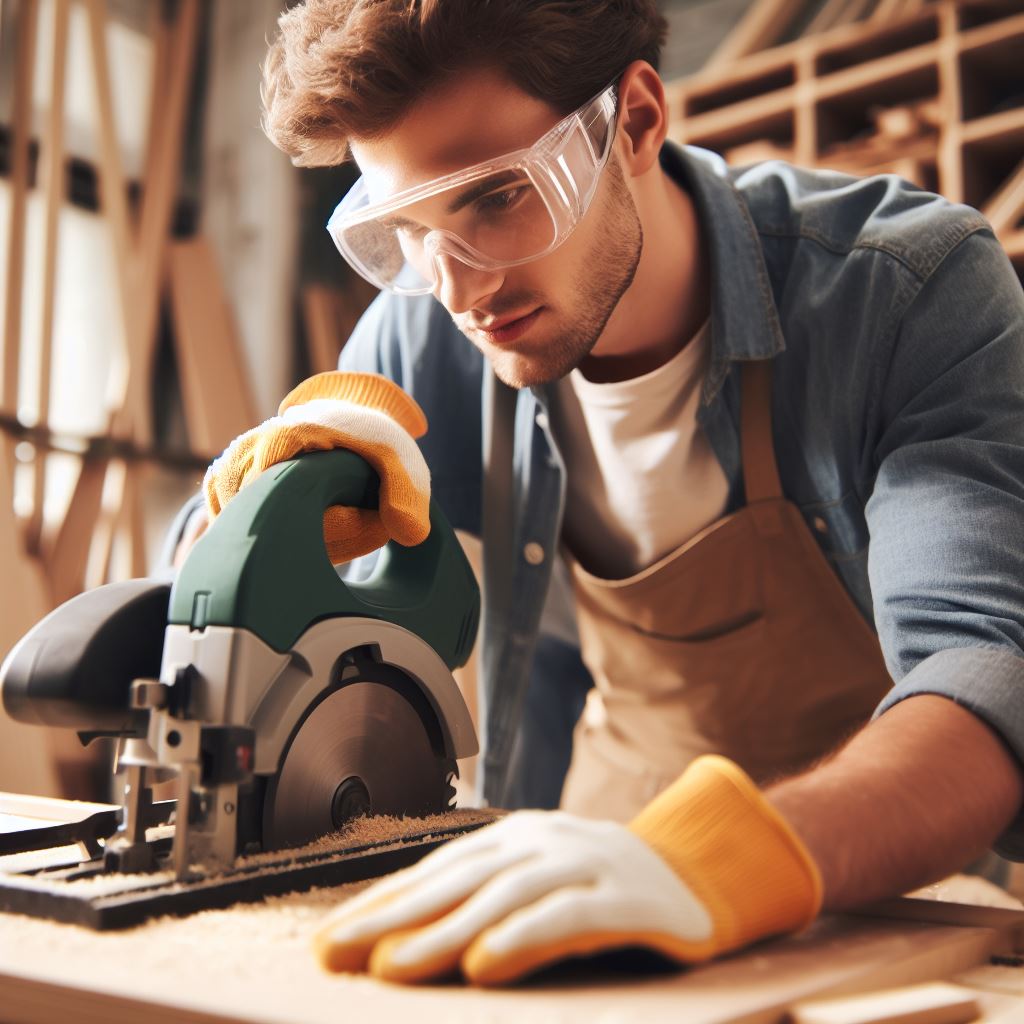
Introduction
Safety must be every woodworker’s first priority. An environment and culture that encourages safe practices, constant learning, and vigilance is key to preventing accidents and injuries.
| Takeaway 1 | Safety starts with leadership setting an example. |
| Takeaway 2 | Every team member must take personal responsibility. |
| Takeaway 3 | Ongoing education keeps safety top of mind. |
Leading by Example
Shop owners and managers must model safe behaviors daily. Wearing proper PPE consistently shows staff to make safety the default mindset. Verbal reminders to use safety gear or pointing out hazards politely also reinforces diligence.
Additional Ways Leaders Promote Safety
- Hold regular safety meetings and trainings.
- Consult safety checklists before operating tools or hazardous materials.
- Communicate openly about past mistakes or close calls.
- Recognize safe working practices with praise or rewards.
Management participation makes safety protocols seem necessary rather than arbitrary rules. According to the U.S. Bureau of Labor Statistics (BLS), leadership involvement caused a 52% reduction in incidents for one national wood products company.
Personal Accountability from Each Member
While managers pave the way, individual shop members also own safety. Simple daily precautions make a major difference:
- Use machine guards whenever possible.
- Never disable safety mechanisms or overrides.
- Clean work areas to minimize slip/fall risks.
- Focus fully without distractions from mobile devices, etc.
Peer encouragement promotes collective responsibility too. Politely reminding co-workers to grab eye protection or avoid loose clothing near spinning blades saves lives.
According to the Occupational Health and Safety Administration (OSHA), this peer intervention model cut injuries by an average of 64% over two years across multiple manufacturing firms.
Ongoing Education
Finally, continued learning helps ingrain safety-first thinking while expanding skills. Consider:
- Holding monthly guest speaker sessions with safety professionals to reinforce key topics.
- Having team members research risks associated with new tools or techniques introduced in the shop.
- Subscribing staff to trade publications like Wood magazine or Fine Woodworking for exposure to the latest protective methods.
As processes change over time, make sure the entire staff stays current. For example, always consult updated safety manuals when acquiring new machinery or modifying shop layouts.
Building an Injury-Free Culture
All woodworking businesses should make safety central to daily operations and long-term plans. Shop owners setting an example, team members taking personal responsibility daily, and ongoing education together create a culture focused on identifying and controlling hazards proactively.
The result is a nurturing, productive shop environment where creativity flows freely without risk of physical harm.
###
Frequently Asked Questions
1. How can I get buy-in from my whole team on safety initiatives?
Getting full team buy-in starts with leadership modeling safe behaviors daily. But also involve staff directly in shaping new policies, reward safe working practices, and show how safety benefits creativity by allowing fuller focus.
2. What are some key safety topics I should train my team on annually?
Cover tool-specific hazards, PPE selection and inspection, dust/contaminant risks, proper material handling, workstation ergonomics, emergency response, and any high-risk processes. Tailor training to the shop and tools used. Bring in outside experts too.
3. Should I worry about safety overhead if weve never had any major accidents?
Absolutely, lack of incidents means your proactive approach is working. But hazards evolve, new risks can emerge, and complacency is dangerous. Ongoing reinforcement ensures safety stays top of mind.
4. How often should we revisit our safety protocols and procedures?
Formally audit everything at least once a year. But also review standard procedures anytime bringing in new tools, materials, or processes since risks can change. Promote continuous small tweaks vs. reactive large changes after incidents.
5. What are simple ways to keep safety front and center each day?
Display safety signage promoting core rules and PPE use around the shop. Begin meetings with a short reminder about a current risky process. Verbally recognize safe working practices when spotted. And lead by example in wearing protective equipment.
6. Should we ask for safety input from non-managerial team members?
Absolutely. Staff doing hands-on work daily often spot emerging hazards first. Solicit their perspective during walkthroughs or via an anonymous suggestion box. Make input easy to encourage sharing things leaders might miss.
7. How can I get visitors like clients or inspectors to comply with our safety policies?
Greet all visitors by outlining basic PPE expectations and risky areas to avoid. Provide disposable eye/ear protection, hard hats, etc. as needed free of charge. Post clear signage on doors labeling hazards within. Escort visitors at all times.
###
Next Steps
We challenge every woodworking business to take the following steps this month:
- Have an open discussion with your team about past safety issues and where current policy can improve.
- Invest in refreshed protective gear like new respirators tailored to precise exposure risks.
- Bring in an outside safety consultant to audit your shop and processes with an unbiased eye.
Valuing lives over output starts from the top down. But responsibility extends through an entire woodworking culture focused on safety first, creativity second. What changes will you make today?

